BUENOS AIRES — I will have died, and you will continue
bordering our life.
Buenos Aires doesn’t forget you,
tango that you were and will be.
—“Somebody Tells It to the Tango,” Jorge Luis Borges/Astor Piazzolla
THE KID WASN’T THRILLED with Dad’s gift — an accordion-like contraption of mystifying buttons, unwieldy bellows and Old World nostalgia, purchased at a New York pawn shop in 1929.
Eight-year-old Astor Piazzolla, a street-smart New Yorker, wanted a baseball bat, a biographer would later recount. What he got was a bandoneón, a bulky instrument of rural German origin that crossed the Atlantic with 19th century immigrant ships and became fundamental to the tango, the emblematic musical expression of Astor’s native Argentina.
The cumbersome box was not some random purchase: Astor’s father, like so many Argentinians, was a passionate tanguero.
The boy would eventually master the harmonic riddles and complex button controls of the bandoneón — and, upon his return to Argentina, deploy it as a potent weapon in a cultural insurgency.
Piazzolla became the visionary who revolutionized the tango — that doleful mélange of broken hearts, dirty dancing and soul-crushing melancholy developed in the South American immigrant melting pot of Argentina and Uruguay.
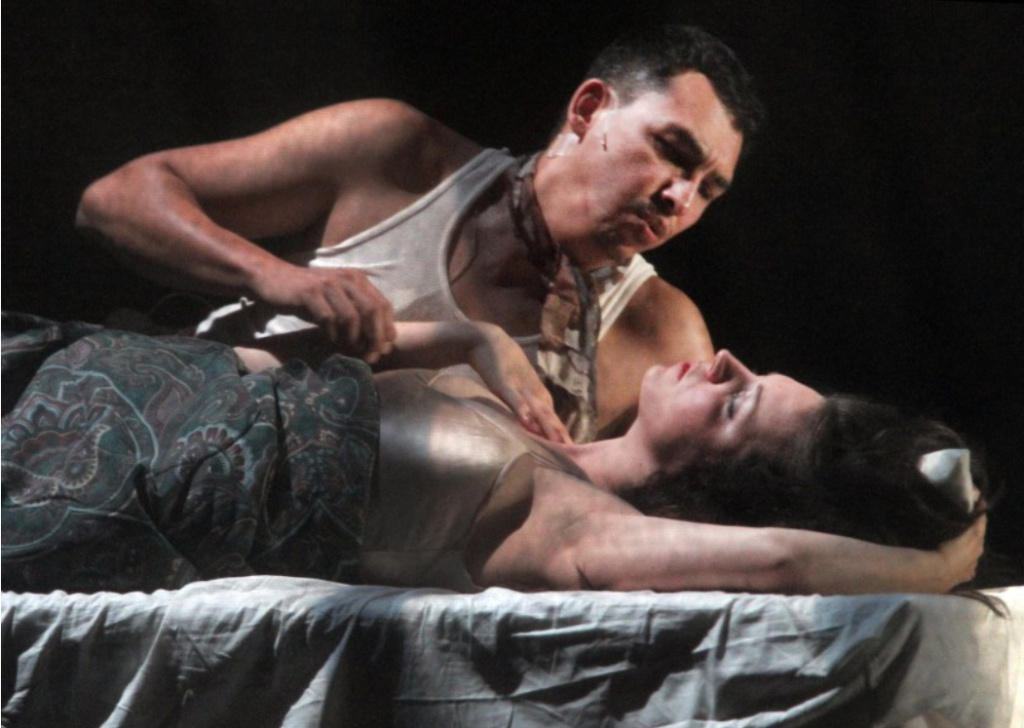
He grooved the oeuvre with elements of classical music and jazz — legacies of his formative years in New York — expanding tango to a universe way beyond the dance floor.
The reboot drew scorn in Argentina, where traditional tango was as essential to the national character as soccer. But, ultimately, he was hailed globally as a genre-bending genius who had done for the tango something like what Picasso did for modern art.
His hundreds of compositions — including orchestral works, opera, ensemble pieces with bandoneón, film scores and big-band numbers — continue to influence not only modern tango players, but also rock, pop, jazz and funk musicians.
Piazzolla made a deep impression on Jacob Collier, a multi-genre British prodigy and Grammy winner. Collier, who played in a tango band at age 14, told Argentine daily La Nación in 2019: “For me, Piazzolla was God.”
This year, Argentina and the world are marking the centenary of Piazzolla’s birth, even as the coronavirus continues to rage. Concert venues and radio stations from Buenos Aires to Paris are rolling out “Piazzolla 100″ tributes for a virtuoso who rose from humble origins to become one of the leading Latin American composers of the 20th century.
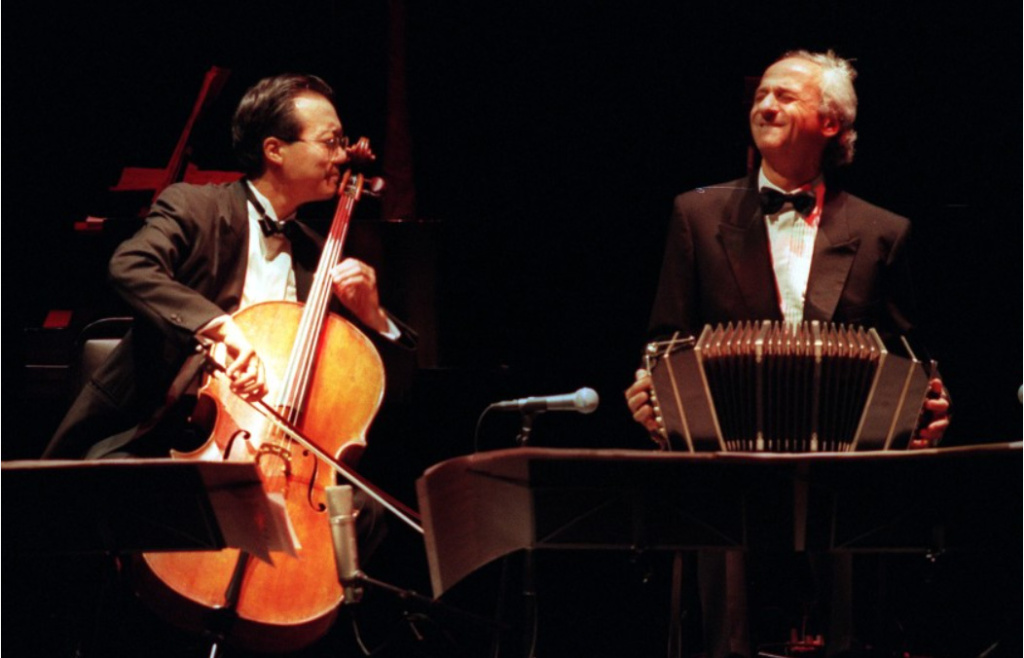
Piazzolla became the visionary who revolutionized the tango — that doleful mélange of broken hearts, dirty dancing and soul-crushing melancholy.
This capital’s signature opera house, the Teatro Colón, reopened to live audiences last month for the first time since the pandemic struck with concerts featuring Piazzolla’s work. The performances were a welcome balm for a wounded national soul after months of lockdowns, illness and economic distress.
“Piazzolla’s music touches me deeply, so much so that I could cry,” said Verónica Armour, 53, a government employee who was among the recent visitors at a Piazzolla exhibition at the Kirchner Cultural Center in downtown Buenos Aires. “The emotion hits you right in the heart. And I don’t even like the tango. But I love the music of Piazzolla.”
Piazzolla was a man of medium stature who carried a Hemingway-sized chip on his shoulder, confident that his talent, honed through indefatigable study and practice, could transcend the boundaries of his craft. And, like Hemingway, he was pugnacious, not one to suffer fools, or critics.
“Never wait for someone to hit you,” was the advice from his beloved father, Vicente, known as Nonino, who imparted lessons in the sweet science, along with a love for music. “You hit first!”
Astor Pantaleón Piazzolla, grandson of an Italian immigrant fisherman, was born March 11, 1921, in Mar del Plata, a seaside town 260 miles south of Buenos Aires. A deformed foot at birth required surgeries and left his right leg permanently weakened — an irony for a musician who pioneered new paradigms for a dance style.“He had a bit of a complex about it,” his son, Daniel Piazzolla, recalled in the 2018 documentary “Piazzolla, the Years of the Shark” by Daniel Rosenfeld, a Buenos Aires filmmaker. “But don’t you dare call him lame! He’d tear you up!”
In 1925, when Astor was 4, the family emigrated to New York, settling into the Lower East Side alongside other immigrants, mostly from Italy and Eastern Europe. It was the Roaring ’20s, a time of social and cultural tumult in Prohibition-era America. The family produced whiskey in a bathtub still to supplement income, Piazzolla told his daughter in one of a series of taped interviews used in the documentary.
His father cut hair in a barbershop where the back room was a numbers parlor, he said. Nonino sometimes rolled up his shirt to show a scar where he said a bullet had grazed his arm in a mob encounter of opaque provenance.

Nonino, who doted on his only child, was a motorcycle enthusiast, an amateur accordion player and a devotee of the tango, with its myriad origins in African, European and Creole traditions. European immigrants to South America introduced tango’s decisive touch — the bandoneón, developed in Germany as a kind of portable organ to serve small parishes and traveling clergy. The fusion of musical styles that became the tango coalesced in the late 19th century dance halls of Buenos Aires and Montevideo.
Astor’s father insisted that his son — drawn to baseball, boxing and neighborhood gangs — study the bandoneón, along with piano, seeking out Argentine expats to help with lessons.
Thanks to New York, his musical exposure went beyond the tango, noted María Susana Azzi, one of his biographers.
Piazzolla said he learned to love Bach and read music from Béla Wilda, a down-on-his-heels Hungarian pianist who lived down the street and had been a student of Sergei Rachmaninoff. Astor and friends traveled to Harlem to hear Cab Calloway and Duke Ellington, and he idolized Bill “Bojangles” Robinson — even performing tap to the harmonica on 14th Street with a friend, passing a hat for change.
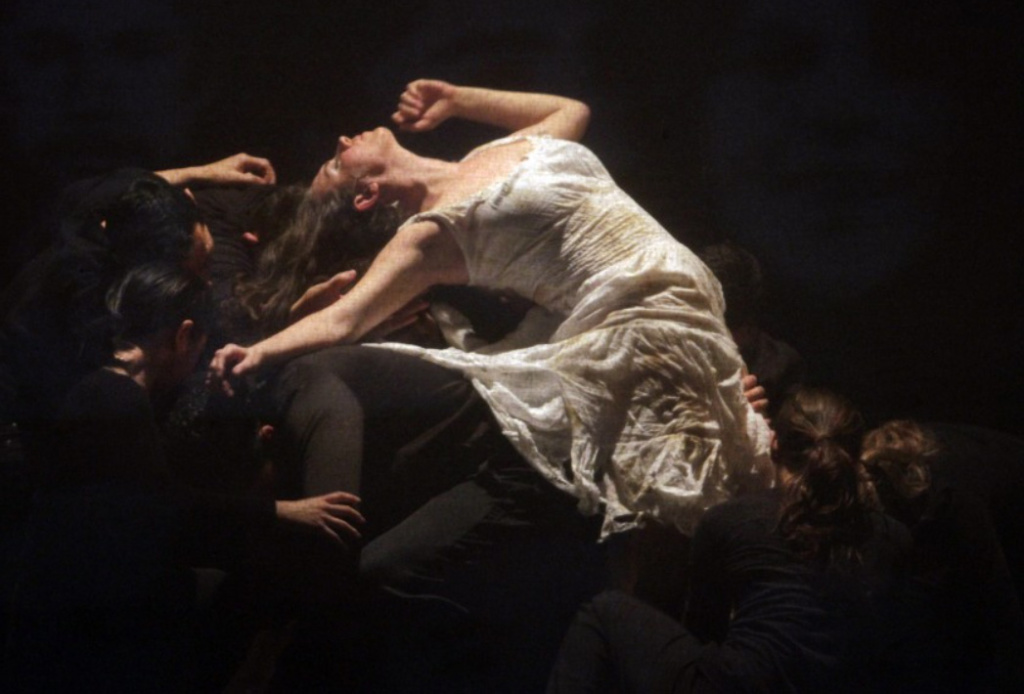
He also absorbed folkloric Italian songs played by relatives and klezmer, Jewish music performed at weddings and other neighborhood functions.
At age 11, he was billed as “the infant marvel of the bandoneón” at a Manhattan gig during a concert titled “A Night in Argentina,” Azzi wrote.
He improbably caught the eye of Carlos Gardel, the baritone-voiced mega-star of the tango who was making films in New York with Paramount after a cabaret run in Paris. The dashing tango legend and innovator of the tango canción (sung tango) was impressed with Astor’s moxie, English-speaking skills and facility with the bandoneón. He gave the impish Piazzolla a bit role as a paperboy in the 1935 film “El Día Que Me Quieras” (The Day That You Love Me).
Gardel even invited the 14-year-old Astor to accompany him on tour, but the family decided he was too young. It was a fortuitous decision. The 1935 tour ended in catastrophe when Gardel, 44, and his entire entourage were killed in an airplane crash in Medellín, Colombia, a cultural apocalypse that sent the tango universe into profound mourning.
After Piazzolla had achieved global renown, he would regale journalists and musicologists in his frozen-in-time English, speaking with tough-guy hints of Jimmy Cagney and the Dead End Kids.
“My music, 50% of it, comes from when I lived in New York,” he told his daughter, Diana, who wrote “Astor,” her quasi-fictionalized biography of her father. “In my blood, in my guts, I’ve got New York inside of me. New York is my place.”
But his musical discovery would happen elsewhere — in his Argentine homeland.
A ‘gladiator’ emerges
With the Depression convulsing the United States, the Piazzolla family returned to Mar del Plata in 1936, a kind of golden age for tango culture. Astor, then 15, talked his way into bands and soon moved to Buenos Aires, a prodigy playing with some of the era’s best-known ensembles, notably the orchestra of the legendary Aníbal Troilo.
Troilo, however, would chide his protégé for using too many notes in his arrangements, confounding the dancers, Azzi says. A young Piazzolla once confided to a colleague his awe at the prospect of playing Gershwin’s “Rhapsody in Blue” with an orchestra, his biographer notes.
“You won’t win anybody over with that,” his bandmate told him. “Leave those things for the North Americans.”
Even as he became famous and started his own tango orchestra, Piazzolla aspired to classical composition. He haunted rehearsals and performances at the Teatro Colón. Always brash, he took a piano score to the apartment of Arthur Rubinstein, the Polish-born piano virtuoso, then living in Buenos Aires.
“I studied and studied, and was happy,” Piazzolla said, recalling his lessons with Alberto Ginastera, a celebrated Argentine classical composer. “I analyzed music, started to buy records. I started to listen. And to change.”
That single-minded discipline likely shielded him from the vices of the tango demimonde, with its proliferation of booze, drugs and other enticements.
He married Dedé Wolf, an artist of French and German ancestry, in 1941.
Increasingly, Piazzolla turned to composing. In 1953, his symphonic piece “Buenos Aires,” notable because it integrated two bandoneóns with a classical orchestra, won a prestigious composing contest. That helped score him a scholarship to study in Paris. By then, Piazzolla later told interviewers, he was trying to put tango behind him, despite knowing hundreds of pieces by heart. But he lugged the 22-pound bandoneón to Europe.
In Paris, he studied under Nadia Boulanger, a famously demanding teacher who had mentored many U.S. composers, including Aaron Copeland. She found Piazzolla’s symphonic work technically sound but lacking personality. She asked him to play the bandoneón.

“She didn’t hear the ‘chan cha cha,’ the common ‘chin boom’ of all the tangos,” Piazzolla told his daughter. “She heard a new tango, and opened my eyes wide. … I grabbed the bandoneón and from there never stopped. It was, I think, the most effervescent moment of my life in terms of creativity.”
He returned to Buenos Aires in 1955, he told an interviewer, with a “gladiator” mentality.
He formed an octet including an electric guitar, signaling a clear break with tradition. His fused a vision of jazz, classical and tango sounds with jagged improvised riffs that left dance in the dust. This was music to be listened to, he declared.
Argentina was outraged. Piazzolla was an “assassin” of the tango. He scrapped with bus drivers, cabbies and radio station managers. Finally, he got fed up and went back to his roots — New York.
“I was quite discouraged,” he recalled. “And when I get discouraged, I leave.”
His former stamping grounds weren’t especially welcoming. He couldn’t find work in New York. He struggled to support his wife and two kids.
He finally found a regular gig, not in New York but in a tango revue at the Club Flamboyán in San Juan, Puerto Rico. On opening night, word came that his beloved Nonino had died back in Mar del Plata. He kept on playing.
“It was my debut; I needed the money,” he recalled in a subsequent interview.
The grief inspired what many consider his supreme composition, “Adiós Nonino” — mostly written in a half-hour rush of mourning and inspiration.
“I don’t know how I did it,” he recalled. “I tried to write another ‘Adiós Nonino’ many times after that but never could.”
Burgeoning fame
Broke, he and his family returned in 1960 to Buenos Aires, where rock ’n’ roll and jazz were seeping into the cultural scene. Piazzolla formed a quintet that would become his most celebrated group.
Jazz aficionados flocked to the nightclub act. He released several albums, including a collaboration with author Jorge Luis Borges, and composed an operetta (“María de Buenos Aires”) and several other works with Horacio Ferrer, the Uruguayan poet.
Amid his growing international celebrity, he moved to Italy in the early 1970s. In Milan, he recorded the album “Reunión Cumbre” (Summit) with U.S. jazz saxophonist Gerry Mulligan.
“Watching him play was incredible,” Mulligan said in an interview on file with the U.S. Library of Congress. “He would do all these very modern voicings on the thing, and in order to reach these buttons, his fingers looked like snakes going all over. It had a really uncanny sense to it.”
During these years, Piazzolla frequently returned to Argentina, even during the 1976-83 military dictatorship — a brutal regime that sent his daughter, a social activist, into exile in Mexico. Piazzolla didn’t mix publicly in politics and was later apologetic about a lunch that he and other artists attended with Gen. Jorge Rafael Videla, the Argentine dictator.
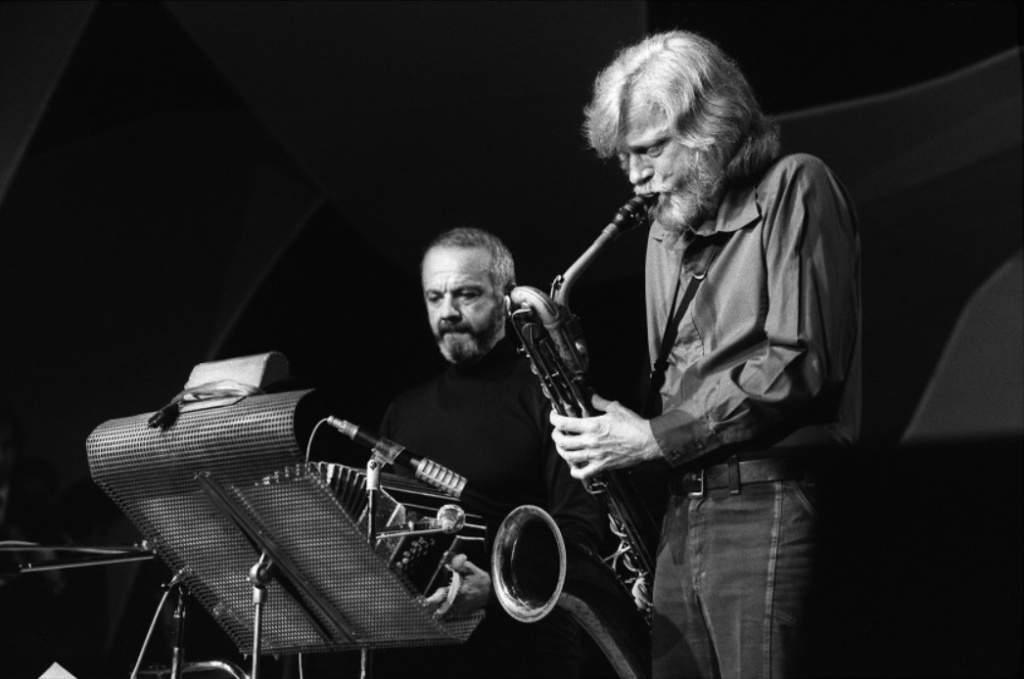
By 1983, when he was featured at the Teatro Colón with the Philharmonic Orchestra of Buenos Aires, Piazzolla was finally financially secure and belatedly accepted in his homeland.
Yet even as a worldwide brand, Piazzolla wasn’t one to compromise with audience-pleasing standards.
“I’m doing what I want — I always do,” he told the Los Angeles Times in a 1989 interview before his L.A. debut at UCLA’s Royce Hall with his final group, the New Tango Sextet. “Look, I’m not a Julio Iglesias. I play none of the old repertoire. … There are some stupid people who expect me to play things like that to get more applause, but I won’t do it. I’ll never sell my soul to the devil for applause — never. I’m not interested in being the richest man in the cemetery.”
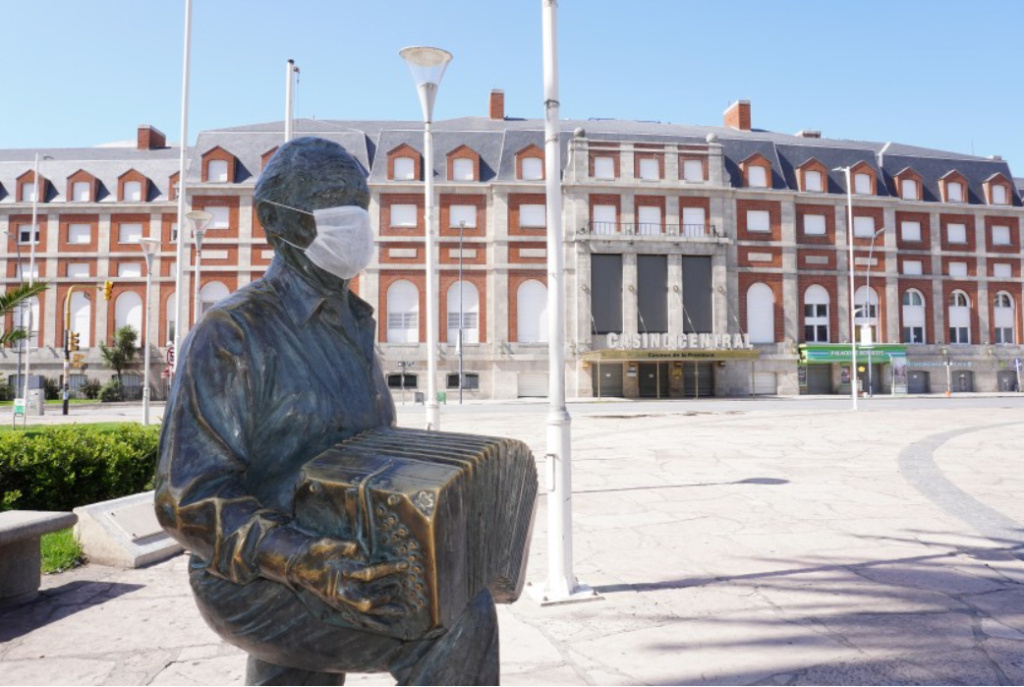
Among his final albums was “Five Tango Sensations,” recorded with the Kronos Quartet in 1990.
That same year, he suffered a cerebral hemorrhage in Paris. He never recovered. Piazzolla, age 71, died in Buenos Aires in 1992.
This year, the outcast and renegade turned cherished native son is being celebrated in Argentina not only at the Teatro Colón, but also in cultural centers and at online sites featuring look-backs at Piazzolla, his life and music, including his pivotal sojourn in New York. If pandemic concerns permit, organizers are planning a year-end outdoor Piazzolla extravaganza at the Obelisk, the iconic monument in downtown Buenos Aires.
“All the polemics, all the controversies about his music — today it is all immaterial,” said Esteban Speyer, 61, who heads the Piazzolla music conservatory here. “The old tango is reduced to memories, while every day more and more people admire Piazzolla’s work.”
Referencia: https://www.latimes.com/world-nation/story/2021-04-15/astor-piazzolla-tango-musical-revolution